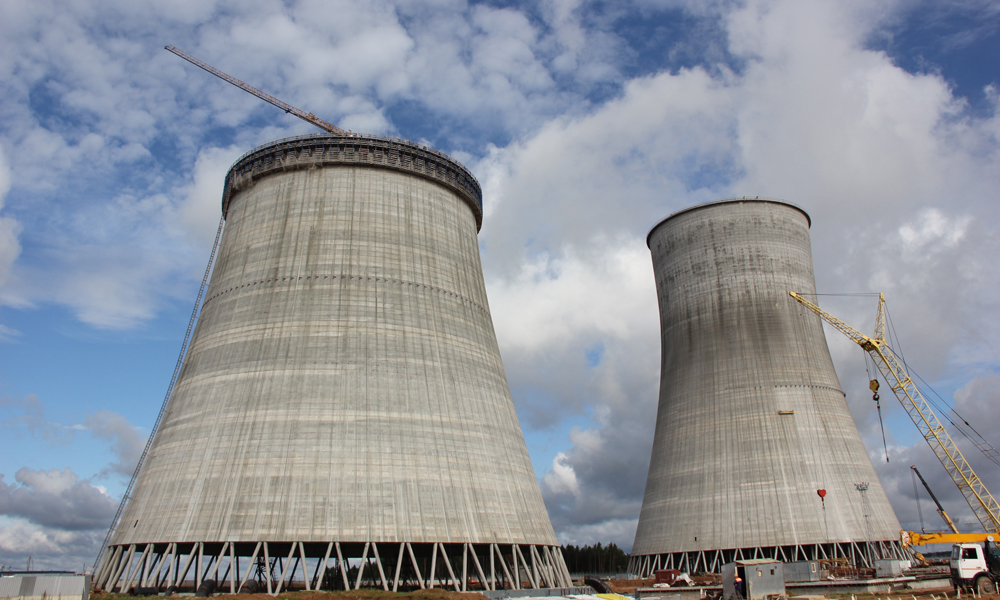
Most Belarusians Support Nuclear
back to contentsThe Belarus NPP construction project carried out by Russia enjoys broad support from the Belarusian people, says Mikhail Mikhadyuk, Belarusian Deputy Minister of Energy. At present, the project is supported by nearly 60% of all Belarusians, he said at a meeting with the press in the town of Ostrovets. “Here [in areas adjacent to the construction site] the popular support of the nuclear plant reaches 83%,” the Deputy Minister said. He stressed that a 50% support for the nuclear construction project was seen as high across the globe.
The meeting of Russian journalists with the Belarusian Deputy Minister of Energy was held as part of the press tour dedicated to nuclear energy cooperation between Belarus and Russia. The tour was organized by the Permanent Committee of the Union State of Russia and Belarus, National Press Center of Belarus, and international news agency Russia Today. “The main objective of inviting Russian media to the nuclear power plant constructed in Belarus is to give Russia and the global community an open and honest report on the nuclear power facility, which is built on the latest technology,” said Margarita Levchenko, Head of Social Policy and Information Support Department of the Union State’s Permanent Committee.
WANO peer review
In 2018, the nuclear power plant will be visited by experts of the World Association of Nuclear Operators (WANO), said Mr. Mikhadyuk. A number of IAEA missions and training seminars are also on the plan before the plant is started. The Deputy Minister emphasized Belarus’ willingness to openly share information about the progress in construction with international nuclear organizations, neighboring countries and other stakeholders. “In accordance with our obligations, we have stress-tested the plant as part of the target safety reassessment because safety is our priority both in construction and operation of the facility. We are preparing a national report on the stress tests, and Belarus has agreed to submit it to the European Commission for revision. The EC is now forming a team to review our national report,” Mikhadyuk said.
For reference
The Belarus NPP is constructed near Ostrovets (Astravets), a small town in the Grodno Region of Belarus. The plant will have two VVER-1200 reactor units with a total capacity of 2,400 MWe. Unit 1 is scheduled for commissioning in 2019, to be followed by Unit 2 in 2020. According to the Belarusian Ministry of Energy, 281.9 million US dollars was spent in the first half of 2017 to finance construction operations on the site of Belarus NPP. The scope of work included further steps in the construction of the first and second power units and auxiliary facilities.
Alexei Likhachev, CEO of ROSATOM
“We have discussed the current situation on the site of Belarus NPP. We stay committed to the goal of bringing the entire plant online in the summer of 2020. I would like to thank the Belarusian party for paying close attention to the construction project. We appreciate this attitude, and so do our constructors working in Belarus. The Belarus nuclear power plant is a next generation facility in terms of safety. It is without peer on the global scale.”
The nuclear power plant is based on the standard AES-2006 Generation 3+ design that offers more efficient performance and advanced safety systems in accordance with post-Fukushima requirements, as well as full compliance with applicable environmental and sanitary regulations. The Russian AES-2006 design features an array of unparalleled safety systems. One of them is a core catcher, a unique safety device designed by Russian nuclear engineers to mitigate effects of a nuclear meltdown. In case of an accident, the core catcher medium mixes with the molten core materials and distributes them evenly inside the catcher body. The catcher can hold the molten core for an unlimited period of time, preventing nuclear materials from getting outside. The first ever core catcher was installed at the Russian-designed Tianwan Nuclear Power Plant in China. Passive heat removal is another unparalleled safety feature of the AES-2006 design. This technology allows for cooling of the reactor core in case of power outage without human involvement.




